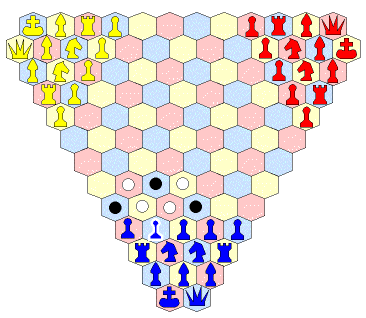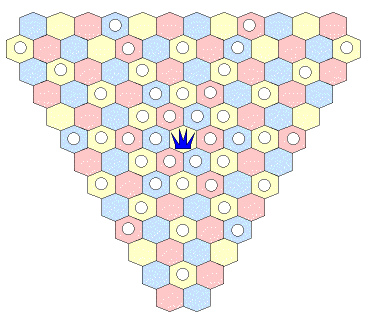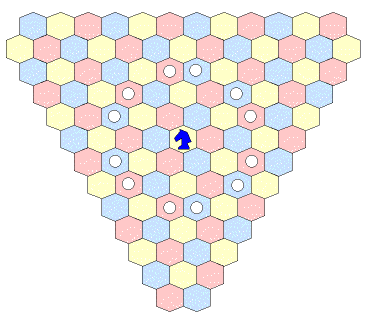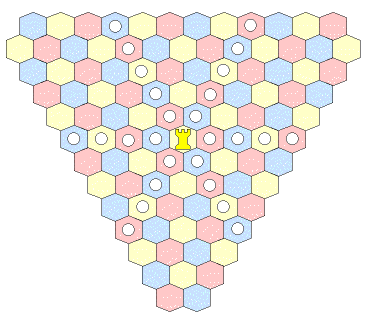
The game is played by three players on a board made of hexagons. The board layout is as follows:


The pawn outlined in white has the following moves possible. The white circles represent legal moves. Because it is the first move the pawn may move either one or two hexes "forward." The black circles are locations where the pawn would be able to capture an opponents piece.

If a pawn reaches the row of hexes opposite the player it may be "queened." In the above diagram if any of the blue pawns reach the hexes outlined in green they may be "queened."

The hexes marked with white circles would be legal moves for this king.

The hexes marked with white circles represent legal moves for this queen.

The hexes marked with white circles represent legal moves for this knight.

The hexes marked with white circles represent legal moves for this bishop.

The hexes marked with white circles represent legal moves for this rook.
I was not able to come up with a system for en passent or castling. This system was play tested somewhat without too many problems. The biggest difficulty is obtaining nine bishops. I made one set of pieces out of porcelain. I built a number of boards out of ceramic tiles. My first board was tagboard with paper hexes pasted on it. We passed a coin from player to player so that we could remember whose turn it was. We started calling it "Chip-Passer Chess." The queen begins on her color just as in regular chess. For this board yellow would go first, then red and finally blue. It's not too bad of a game if you can round up enough bishops to play.